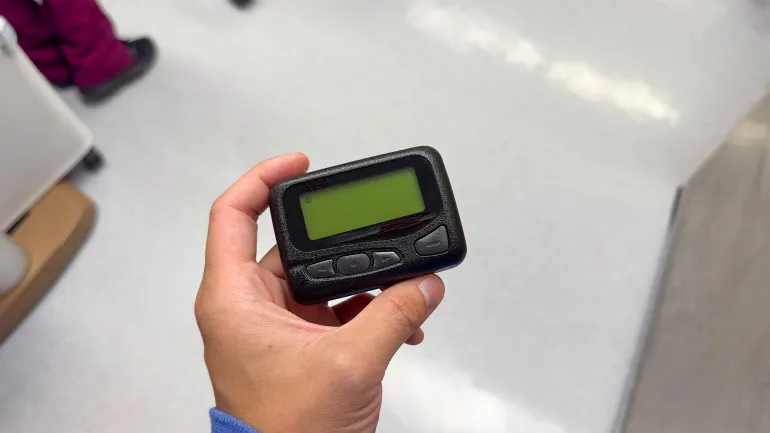In a tragic attack, at least nine people were killed and over 2,750 injured in Lebanon, following a series of explosions that continued to rip through the country. A hack targeting low-tech pager communication devices used by Hezbollah, the militant group backed by Iran. The devices are believed to be rigged with explosives, set off in a series of detonations in different locations across Lebanon, sending waves of destruction throughout the region.

Pager Explosions Across Lebanon
The blasts occurred on Tuesday afternoon, around 15:30 local time, in Beirut and the rest of Lebanon. Handheld pagers, which Hezbollah members were using to allegedly receive communications in a supposedly more secure way than cell phones in order to avoid Israeli espionage, suddenly began exploding one after another. One CCTV captured the dreadful moment when a man's pager exploded as he shopped, and he fell writhing on the floor in pain as customers ran away from him. Health Minister Firass Abiad said over 200 were found in critical condition-most with hands, faces and eyes maimed by the blasts. "Hospitals here are overwhelmed by this number," he admitted while describing the gruesome injuries ranging from finger and other limb amputations to smashed facial features and eyes. There were tragic losses: eight Hezbollah fighters, one child, reports Hezbollah's media office.

The Cyber Warfare
Hezbollah blamed to Israel, where it accused that the Mossad (Israeli intelligence agency) had indeed placed the explosives in those pagers secretly months before. It has been confirmed that Hezbollah was using these Taiwan-manufactured pagers because they fitted into their plan of avoiding Israeli cyber surveillance, which was said to be among the world's best. The group had opted for low-tech devices such as those pagers because they were believed not to hack since they thought mobile phones were liable to hacking. A veteran IDF agent supposed that the power of the blasts was too extraordinary to be from the usual faults in pager batteries. He stated that the devices must have been rigged with military explosives and were set to detonate by a trigger signal received remotely by Hezbollah communication channels.

Hezbollah's Retort: A Call for Revenge
The bombings take place amidst a broader war between Israel and Hezbollah, which have intensified since the Gaza conflict flared up in October 2023. Hezbollah had been openly participating in cross-border clashes against Israel, countering Israel's high-tech monitoring system with low-tech tricks like drones. Meanwhile, the pager bombings mark an extreme escalation of the kind of covert warfare between the two forces.

Can Your Devices Turn You into Involuntary Suicide Bombers?
The Lebanon pager explosion is not an incident but can be a part of a broader shift towards cyber-attacks that transform personal devices into tools of destruction. This incident is a wake-up call to the very real dangers posed by cyber warfare. Involuntary suicide bombings via hacked devices could become a terrifying norm in future conflicts. With the growing dependence on smartphones, wearable technology, and smart home devices, the possibilities for hackers to manipulate these gadgets for malicious purposes are concerning. Imagine a scenario where a smart device in your home or a gadget in your pocket could be rigged remotely to cause harm. While these devices have become integral to daily life facilitating communication, healthcare, and security—they also open up new attack vectors for malicious entities, including nation-states and cybercriminals. The technology used in such attacks doesn’t have to be sophisticated. As seen in the case of Hezbollah’s pager explosion, even low-tech devices, which don’t rely on advanced processors or encryption, can be manipulated. We are living in a time where devices, designed for communication and convenience, can be weaponized without their users even knowing. This begs the question: if a pager, a relic of the past, can be hacked and weaponized, what could hackers potentially do with modern, internet-connected devices?
Inputs by Agencies
Image Source: Multiple Agencies
Ⓒ Copyright 2024. All Rights Reserved Powered by Vygr Media.


























